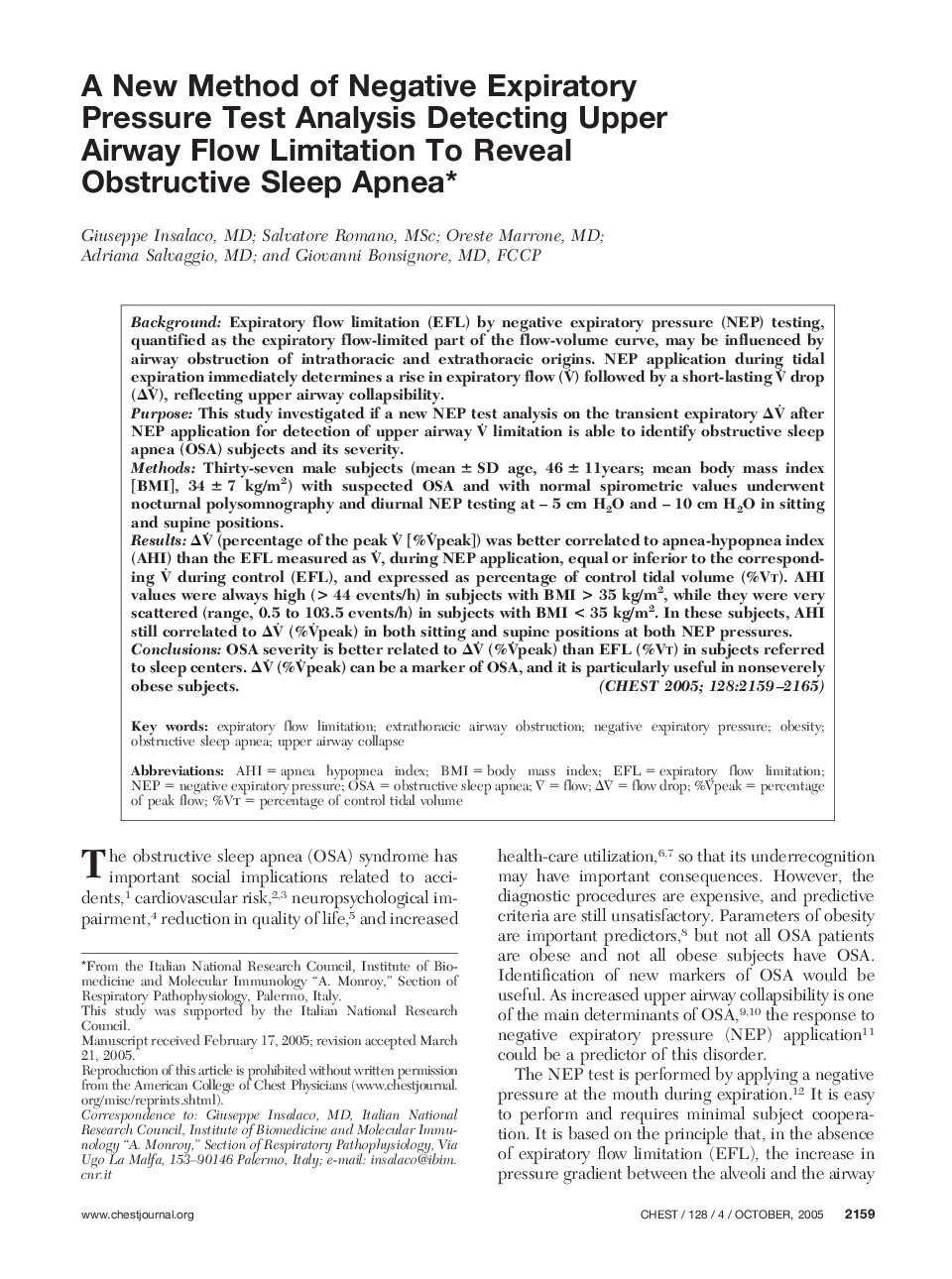| کد مقاله | کد نشریه | سال انتشار | مقاله انگلیسی | نسخه تمام متن |
|---|---|---|---|---|
| 2907095 | 1173488 | 2005 | 7 صفحه PDF | دانلود رایگان |

BackgroundExpiratory flow limitation (EFL) by negative expiratory pressure (NEP) testing, quantified as the expiratory flow-limited part of the flow-volume curve, may be influenced by airway obstruction of intrathoracic and extrathoracic origins. NEP application during tidal expiration immediately determines a rise in expiratory flow ( V˙) followed by a short-lasting V˙ drop (Δ V˙), reflecting upper airway collapsibility.PurposeThis study investigated if a new NEP test analysis on the transient expiratory Δ V˙ after NEP application for detection of upper airway V˙ limitation is able to identify obstructive sleep apnea (OSA) subjects and its severity.MethodsThirty-seven male subjects (mean ± SD age, 46 ± 11years; mean body mass index [BMI], 34 ± 7 kg/m2) with suspected OSA and with normal spirometric values underwent nocturnal polysomnography and diurnal NEP testing at – 5 cm H2 O and – 10 cm H2 O in sitting and supine positions.ResultsΔ V˙ (percentage of the peak V˙ [% V˙ peak]) was better correlated to apnea-hypopnea index (AHI) than the EFL measured as V˙, during NEP application, equal or inferior to the corresponding V˙ during control (EFL), and expressed as percentage of control tidal volume (%Vt). AHI values were always high (> 44 events/h) in subjects with BMI > 35 kg/m2, while they were very scattered (range, 0.5 to 103.5 events/h) in subjects with BMI < 35 kg/m2. In these subjects, AHI still correlated to Δ V˙ (% V˙ peak) in both sitting and supine positions at both NEP pressures.ConclusionsOSA severity is better related to Δ V˙ (% V˙ peak) than EFL (%Vt) in subjects referred to sleep centers. Δ V˙ (% V˙ peak) can be a marker of OSA, and it is particularly useful in nonseverely obese subjects.
Journal: Chest - Volume 128, Issue 4, October 2005, Pages 2159–2165